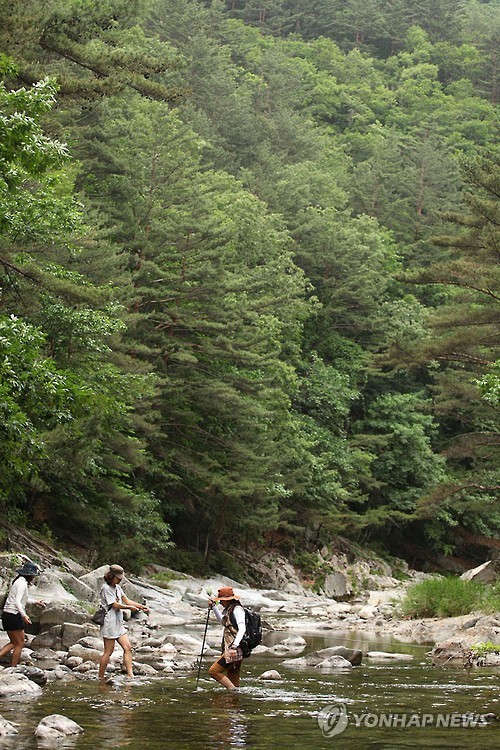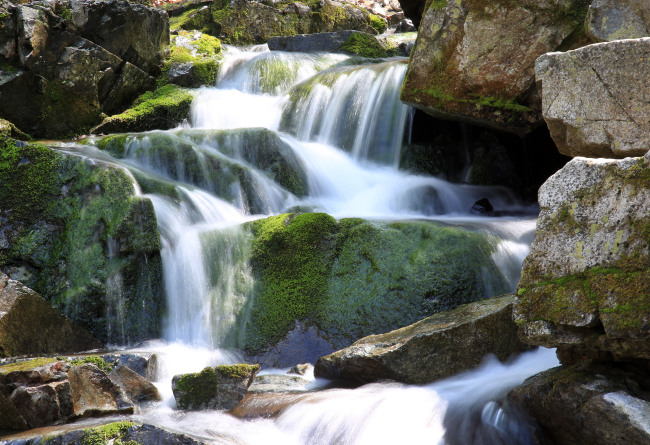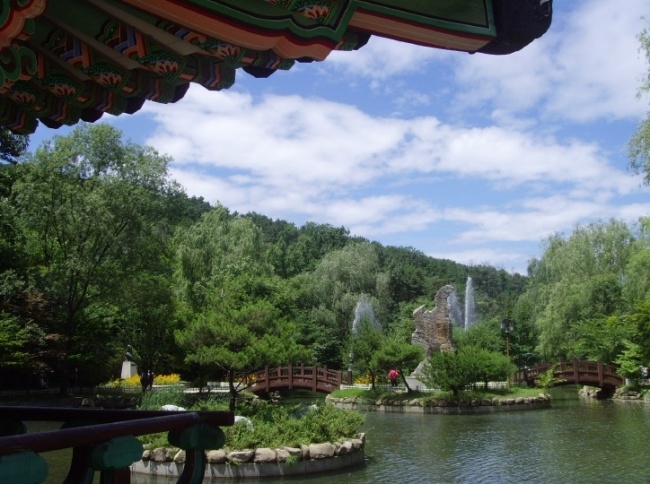With about 70 percent of land in South Korea covered by mountainous regions, hiking is a familiar and accessible pastime for many Koreans.
During the summer, Koreans often visit the mountains and spend time in the valleys and riverside to ward off the heat and escape from the daily grind. Here are several popular valleys to visit for the summer.
Achimgari
During the summer, Koreans often visit the mountains and spend time in the valleys and riverside to ward off the heat and escape from the daily grind. Here are several popular valleys to visit for the summer.
Achimgari

Achimgari, a valley located on Mount Bangtaesan in Inje, Gangwon province, is famous for its trekking course.
It has earned its name because you can only plow the fields during the morning (“achim”) as the sunshine lasts for a shorter duration, as it is located deep in the mountains.
Achimgari is well-known for its hiking course of about 12 kilometers that takes five hours to complete. Some of its main charms are the natural paths, rather than man-made roads.
“There aren’t any official hiking trails, the paths are made naturally by the people who walked here,” said Lee Jae-cheol, an official from the Baekdudaegan trail information center. “There aren’t any bridges by the waterside so there are sections where you have to trek across water, which can sometimes come up to your chest.”
However, Lee said the trails are safe enough that beginners can also trek without much in the way of problems. There are also areas near the valley where people can go rafting.
Achimgari sees about 5,000-6,000 visitors during the peak from July to August. Because of the depth of the valley, the water becomes too cold to walk through in colder weather, so it is recommended that visitors come during warmer periods from mid-June to early September.
Eoreumgol

Those looking to escape the summer heat and humidity can find themselves a natural air conditioner at Eoreumgol.
Eoreumgol, located on Mount Cheonwangsan near Miryang, South Gyeongsang Province, means “ice valley,” receiving its name from its freezing temperature even during the summertime.
Visitors can feel a cool breeze and even see ice between the rocks. The phenomenon behind this is due to scree formation, where a collection of broken rock fragments from cliffs and mountains form ice between the rocks when water flow is blocked and the temperature drops.
Eoreumgol is a popular tourist attraction that sees about 100,000 visitors annually and was designated Korean Natural Monument No. 224 in 1970.
There is also a cable car that visitors can take to see the view of the valley from above.
According to the Eoreumgol Management Office, visitors are not allowed to cook or put up tents in the area. “This is a location to come and heal your mind,” an official said.
Mount Gwanaksan Nadeul road

There are also mountains and valleys people can visit in the capital city of Seoul.
Mount Gwanaksan, which stretches across Seoul and parts of Gyeonggi province, has numerous hiking trails throughout.
One of its courses is the Mount Gwanaksan Nadeul road, which refers to the trail that begins from the mountain entrance and follows the various streams in the mountain valleys, passing by a lake garden and a mountain spring in the process. The trail is 5.58 kilometers long and easy for people of all ages to walk as it has very little in the way of slopes, unlike other hiking courses in Gwanaksan.
In the summer, they open the downstream area free for the public to swim and play in. The amount of water downstream is affected by the amount of rain it gets during the year. “Water levels are expected to rise after the rainy season,” said an official at Seoul Metropolitan Government.
By Sang Youn-joo (sangyj@heraldcorp.com)



![[AtoZ into Korean mind] Humor in Korea: Navigating the line between what's funny and not](http://res.heraldm.com/phpwas/restmb_idxmake.php?idx=644&simg=/content/image/2024/04/22/20240422050642_0.jpg&u=)
![[Exclusive] Korean military set to ban iPhones over 'security' concerns](http://res.heraldm.com/phpwas/restmb_idxmake.php?idx=644&simg=/content/image/2024/04/23/20240423050599_0.jpg&u=20240423183955)



![[Graphic News] 77% of young Koreans still financially dependent](http://res.heraldm.com/phpwas/restmb_idxmake.php?idx=644&simg=/content/image/2024/04/22/20240422050762_0.gif&u=)
![[Herald Interview] Why Toss invited hackers to penetrate its system](http://res.heraldm.com/phpwas/restmb_idxmake.php?idx=644&simg=/content/image/2024/04/22/20240422050569_0.jpg&u=20240422150649)





![[Exclusive] Korean military to ban iPhones over security issues](http://res.heraldm.com/phpwas/restmb_idxmake.php?idx=652&simg=/content/image/2024/04/23/20240423050599_0.jpg&u=20240423183955)



![[Today’s K-pop] Ateez confirms US tour details](http://res.heraldm.com/phpwas/restmb_idxmake.php?idx=642&simg=/content/image/2024/04/23/20240423050700_0.jpg&u=)